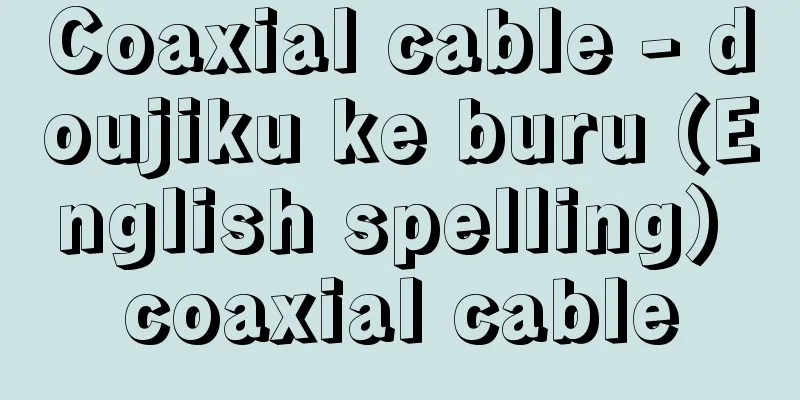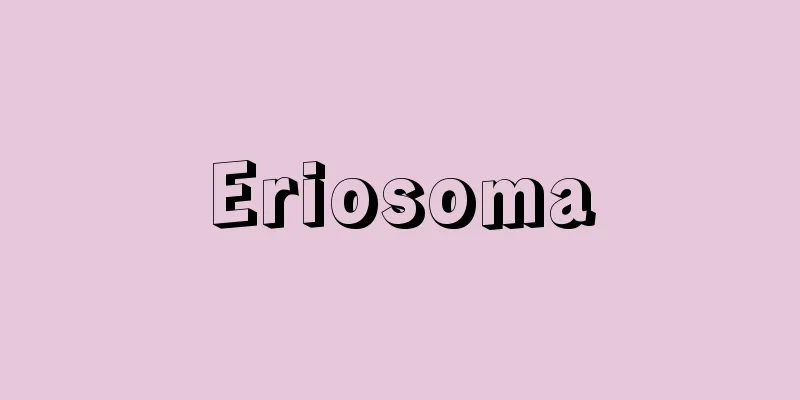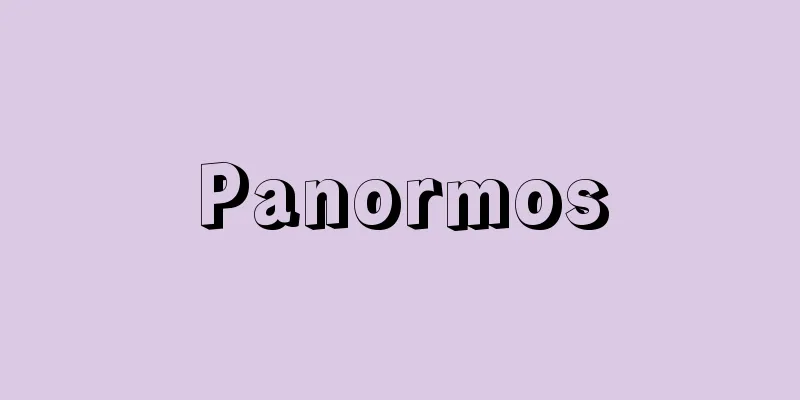Coaxial cable - doujiku ke buru (English spelling) coaxial cable

|
It is an unbalanced communication cable that has one circular central conductor and a cylindrical outer conductor that is concentrically surrounded by the central conductor, with the inner and outer conductors insulated from each other. Since its proposal by Schelkunoff et al. of the United States in 1934, coaxial cables have been attracting attention as a multiple line to replace unloaded carrier cables. In Japan, development began in 1938 (Showa 13), and plans were made to lay a coaxial cable for television transmission between Tokyo and Osaka in time for the Tokyo Olympics, which were scheduled to be held in 1940. However, due to the war, only the Shibuya-Shimada section was laid and the line was not opened. Long-distance trunk cables are 9.5 mm coaxial cables (also called standard coaxial cables), which have been laid since 1956 (Showa 31). The inner diameter of the outer conductor is 9.5 mm, and polyethylene disks are attached at equal intervals on a central conductor of about 2.64 mm, with a copper outer conductor arranged in a coaxial circle around it, with the required number of strands twisted together and covered with a lead sheath. One coaxial core (single core) can carry 10,800 telephone lines or nine 4 MHz television signals. The long-distance 4.4 mm coaxial cable (also called fine-core coaxial cable) was adopted in 1965. The inner diameter of the outer conductor is 4.4 mm. A polyethylene tape with insulating protrusions is wrapped vertically around the central conductor and welded to it into a cylindrical shape, and a copper outer conductor is arranged around it in a coaxial circle. A single coaxial core can transmit 2,700 telephone lines. A familiar example of the structure of a coaxial cable is the coaxial cord. Coaxial cords are used for TV antenna feeders, wiring for high-frequency devices, lead wires for high-frequency measuring instruments, etc. The central conductor is a soft copper single wire or twisted wire, the insulation is solid polyethylene, the outer conductor is a flexible soft copper wire braid, and is vinyl coated. [Teruo Sakuma] [Reference item] |Source: Shogakukan Encyclopedia Nipponica About Encyclopedia Nipponica Information | Legend |
|
1本の円形の中心導体とこれを同心状に囲む円筒形の外部導体を配置し、その内外部導体間を絶縁した不平衡通信ケーブルである。1934年アメリカのシェルクノフらの提案以来、無装荷搬送ケーブルにかわる多重線路として同軸ケーブルが着目されるようになった。日本でも1938年(昭和13)から開発が始められ、40年に開催予定であった東京オリンピックを目標として東京―大阪間にテレビ伝送用に同軸ケーブル敷設が計画された。しかし、戦争のため渋谷―島田間に敷設されただけで回線開通には至らなかった。 長距離幹線用のケーブルは9.5ミリメートル同軸ケーブル(標準同軸ケーブルともいう)で、1956年(昭和31)から敷設されている。外部導体の内径が9.5ミリメートルであって、中心導体約2.64ミリメートル上にポリエチレンの円板を等間隔に装着し、その周囲に同軸円状に銅の外部導体を配置し、必要本数を撚(よ)り合わせ鉛被を施したケーブルである。1本の同軸心(1心)で電話1万0800回線あるいは4メガヘルツのテレビ信号を9回線送ることができる。 長距離用の4.4ミリメートル同軸ケーブル(細心同軸ケーブルともいう)は、1965年に採用され、外部導体の内径が4.4ミリメートルで、中心導体に絶縁用突起付きポリエチレンテープを円筒形に縦に包み溶着し、その周囲に同軸円状に銅の外部導体を配置した構造であり、1本の同軸心で電話2700回線を送ることができる。 同軸ケーブルの構造で身近なものに同軸コードがある。同軸コードはテレビアンテナのフィーダー、高周波機器の配線、高周波測定器用リード線などに使用され、中心導体は軟銅単線あるいは撚り線、絶縁体はポリエチレン充実形、外部導体はたわみ性に富む軟銅線編組が使用され、ビニル被覆が施されている。 [佐久間照夫] [参照項目] |出典 小学館 日本大百科全書(ニッポニカ)日本大百科全書(ニッポニカ)について 情報 | 凡例 |
Recommend
'Aḍud al‐Dawla
936‐983 Amir of the Buyid dynasty. Reigned 949-983...
Engaku
〘Noun〙 Buddhist term. A complete and perfect enlig...
Joos van Cleve
Around 1485 - 1540 or 41 Flemish painter, born Joo...
Will o' the Wisp
... First of all, monsters were created as strang...
Tenmei Famine
This is one of the three major famines of the Edo...
bell tower
… [Hibino Takeo] [Western] A bell tower stands be...
Arithmetic mean
For n numbers a 1 , a 2 ,……, a n , the sum of the...
The origin of the Ruiju Shinto religion
A book that compiles the ideas of Ise Shinto. Writ...
Wittenberg - Wittenberg (English spelling)
A city in the state of Saxony-Anhalt in central-e...
Winter Prayer - Kannebutsu
〘Noun〙 (A variation of "kannenbutsu (cold cha...
Tingley, K.
…The Theosophical Society, which was established ...
Joachim II
...The Junkers took advantage of the margrave'...
clasper
… In cartilaginous fishes, which are ovoviviparou...
Thai Tong (English spelling)
…Thang Long became the capital of Vietnam for a l...
Whiskers - Hossu
A Buddhist implement made of a bundle of animal h...









